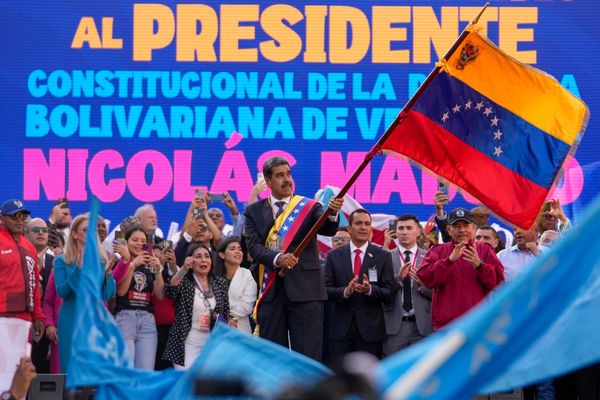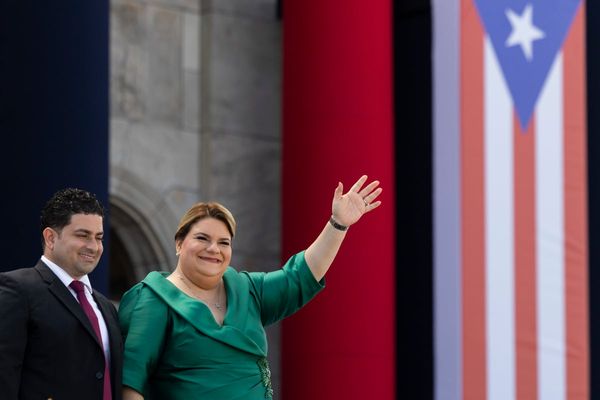
When U.S. Sen. Chris Coons visited Addis Ababa, Ethiopia, and met Prime Minister Abiy Ahmed in March, the top American demand was that Abiy should order the withdrawal of Eritrean troops from the Tigray region. After four months of denials that the Eritreans were inside Ethiopia, Abiy belatedly acknowledged their presence and promised to request their withdrawal.
It’s not going to happen. Numerous reports indicate that the Eritrean troops have committed atrocities in Tigray and that this violence has continued unabated since Coons met Abiy. As late as mid-April, heavy fighting was happening on three fronts in central Tigray involving dozens of Eritrean divisions, and Eritrean troops have reportedly been rebadged with Ethiopian military uniforms to disguise their identities.
Despite the Ethiopian government’s attempt to block any information from the region, international human rights organizations have scrupulously documented mass killings, rape, and wanton destruction and pillaging of villages, industries, clinics, schools, government offices, and banks. In the absence of restraints, these rampant atrocities have induced human-made famine and continue to cause avoidable loss of life.
My sources on the ground who wish to remain anonymous—as well as daily reports from the Tigray-based media outlets Dimtsi Weyane and Tigray Media House—confirm that the Eritrean regime has committed at least 10 divisions at the Tsediya front alone. Last month, Kindeya Gebrehiwot, a professor and ex-president of Mekelle University, tweeted photos and accounts of houses and grain stores burned down by Eritrean forces on the Adet-Zana front during this period.
Abiy has, it appears, invited the Eritrean dictator Isaias Afwerki to wreak mayhem on Tigray. The terms of this deal aren’t public—but its implications are becoming ever more alarming.
I know Isaias both as an ally and as an adversary. During the pre-1991 war against the Ethiopian military junta, known as the Derg, Tigrayan and Eritrean forces joined hands in repulsing the Derg’s “Red Star Campaign” in 1982, which aimed at dislodging the Eritrean forces from their last stronghold in the Sahel mountains of northern Eritrea. The relationship between the Tigray People’s Liberation Front (TPLF) and Isaias’s Eritrean forces went sour in 1985—due to reports of Isaias’s secret negotiations with the Soviets and the blocking of a humanitarian corridor from Sudan—but we rekindled ties in 1987 due to the need to fight against a common foe, and our cooperation continued until the demise of the Derg in May 1991.
As chair for military affairs and member of the executive committee of the TPLF, I met with Isaias and his colleagues on several occasions. Our relations after 1991 were not smooth but continued relatively amicably until after the 1993 Eritrean independence referendum, when Ethiopia and Eritrea started to realign their relations in the spirit of a bilateral relationship between two sovereign states. I remained engaged in bilateral defense and security matters during my tenure as Ethiopia’s defense minister until 1995. Ties between the two governments deteriorated in the late 1990s, eventually leading to conflict, and I served on Ethiopia’s Central Command for the duration of the war against Eritrea from 1998 to 2000.
Today, Isaias rules a country stricken by poverty despite Eritrea’s ample access to ports and an untapped potential for trade. Instead, he leverages his military power to dictate regional policies and extort economic concessions from his neighbors, in addition to deploying his network of illicit trade in the Horn of Africa region and beyond.
The extensive deployment of Eritrea’s army and security forces in Ethiopia indicates the deep involvement of Eritrea in the Ethiopian polity. Examples include the deployment of Eritrean troops alongside Amhara forces and the federal army on the Ethiopia-Sudan border (where there is a territorial dispute) and the reported use of Eritrean troops in the fight against the Oromo Liberation Army in Ethiopia’s Oromia regional state.
This massive involvement threatens to further destabilize the Horn of Africa. The Ethiopian-Eritrean alliance has poisoned Ethiopian-Sudanese relations by bringing Addis Ababa and Asmara into alignment over the Sudanese border dispute and the controversy surrounding the Grand Ethiopian Renaissance Dam. This fallout is jeopardizing peacekeeping missions in Sudan and South Sudan, and it has encouraged Somalia’s leader Mohamed Abdullahi Mohamed, also known as Farmajo, to cling to power after the expiration of his term in office—and also to pick a quarrel with Kenya. Isaias and Abiy will continue to destabilize the region unless their newfound alliance is limited through diplomacy or the use of force.
Isaias’s quest to extract undue economic benefits from Ethiopia has been present since the early 1990s. Leveraging the strong alliance built between Eritrean People’s Liberation Front and TPLF during our joint war against the Derg, which was in power from 1974-1991, Isaias made demands for monetary policy concessions.
This became evident after Eritrea printed its own currency, the nakfa, in 1997 and the two countries embarked on redefining their monetary, trade, and investment policies. The Ethiopian government—led by the Ethiopian People’s Revolutionary Democratic Front coalition with the TPLF as its strongest member—wanted bilateral trade to follow internationally accepted norms whereby our currencies would be pegged to the U.S. dollar.
The Eritreans did not agree to this and demanded that our two currencies have a parity exchange rate (one Ethiopian birr would be exchanged for one Eritrean nakfa) and rejected the pegging and the market rate of exchange. They also demanded that businesses owned by Eritreans in Ethiopia be treated like Ethiopian firms, which would mean they would repatriate their profits in foreign currency even if their capital source was Ethiopian. It was this disagreement that laid the groundwork for the 1998-2000 Ethiopian-Eritrean War.
Relations deteriorated as our side refused to give in to Eritrean demands and Isaias invaded Badme in 1998 to coerce the Ethiopian government to yield to his wishes. Contrary to popular perceptions, as Isaias acknowledged in an interview conducted in November 2018, the Ethiopian-Eritrean War was not primarily about a border dispute. It was Isaias who ignited the war by sending invading troops into Ethiopian territory in 1998, under the guise of a border dispute.
In late May 1998, Isaias rejected proposals of a return to the status quo ante to be followed by negotiated settlement that were introduced by the United States and Rwanda, and later by the African Union. When diplomacy failed, it was the use of force that finally led him to sign the cessation of hostilities agreement in Algiers in 2000. Similarly, Eritrea’s involvement in the current war in Tigray is not a border or a national security concern. Instead, it is an opportunity for Isaias to unleash his wrath on his old enemy, the TPLF, and the people of Tigray with the help of Abiy’s government and Amhara militias seeking to realize their irredentist territorial claims to parts of Tigray.
In his statement to the Ethiopian House of Representatives on March 23, shortly after seeing Coons, Abiy was at pains to explain why it would be difficult for Isaias to withdraw his troops in the absence of Ethiopian federal forces to close the gap that could be created by the withdrawal. As to the withdrawal of the Amhara forces from southern and western Tigray, he simply averred that it would not happen.
Soon after the speech, Abiy traveled to Asmara, and two statements were released from both capitals on March 26. The release from Asmara said nothing about the central issue—the withdrawal of Eritrean forces from Tigray—while the statement from Addis Ababa said that both sides agreed on the withdrawal. In those statements, neither side mentioned the atrocities committed in Tigray nor any investigation into them, but they did stress their so-called shared vision of economic cooperation and partnership.
The message was clear: Isaias intends to keep his troops on Ethiopian soil, and Abiy seems prepared to provide the requisite political and economic cover, because he wants him to stay. Indeed, the two need each other. The double talk is intended to make the international community refrain from imposing punitive sanctions on Ethiopia so Isaias can thrive on the economic umbilical cord that they intend to develop under the guise of economic cooperation and partnership.
Isaias’s campaign in Tigray is the first step toward achieving his long-term dream of leveraging the strong Ethiopian economy to serve his interests, including his grandiose regional ambitions to lead a regional alliance of autocrats that he sees taking shape in the Horn of Africa, based on his autocratic model of governance, which is imposed by his security apparatus and army.
Links with Ethiopia’s economy will allow Isaias to escape the effects of any possible economic sanctions imposed by the international community while maintaining the Eritrean economy as his personal fiefdom. In particular, he is encouraging Amhara leaders in Ethiopia to resist international pressure, assuring them that sanctions against Ethiopia, if imposed, may not significantly affect the country. After all, the Eritrean regime was under United Nations sanctions for supporting the Somali militant group al-Shabab for about a decade, and Isaias claims to have survived mostly unscathed; he is now trying to sell this approach to Amhara elites as proof that Ethiopia can survive it as well, if push comes to shove.
There are signs on the ground that Isaias, Abiy, and Amhara elites are already working toward a de facto partition of Tigray into three pieces. First, the irredentist Amhara forces will seek to incorporate most of southern and western Tigray into the Amhara regional state; the world is already witnessing this as hundreds of thousands of people are displaced from western Tigray in what the U.S. government has called “ethnic cleansing.” Second, the northern part of Tigray stretching from the Eritrean border to the highway linking Adigrat and Shire is likely to remain under the control of the Eritrean occupiers, now more likely to be wearing Ethiopian army uniforms. Eritrea’s current deployment of forces and actions it is taking in areas north of Adigrat are indicators of its intentions. The remaining piece of Tigray will be left for the interim administration of Tigray installed by Abiy. Of course, this administration will be challenged by Tigrayan forces, and its viability depends on the military, political, and diplomatic dynamics that unfold in the coming months.
The three forces can plan and fight jointly; they will likely have the same source of food, ammunition, uniforms, and paychecks—with the funding coming from Ethiopia’s government. Under this scenario, Abiy could claim that he cannot compel the Eritreans to remove their troops as demanded by the Biden administration or force the Amhara militias to leave. He could then plead that Ethiopia is both too big and too fragile to be able to afford sanctions—implicitly threatening total breakdown if his plan is not backed.
This strategy would allow Isaias to make an end-run around the prospect of sanctions. Isaias is convinced that sanctions against Eritrea are unescapable, while it is less likely that the international community will treat Ethiopia as harshly. Either way, he is confident that economic cooperation with Ethiopia will help him survive, because it buys him time.
If his plan is allowed to play out, Ethiopians will discover—as have the long-suffering Eritrean people—that Isaias is a false friend. The Eritrean dictator is determined to ruin and to rule the Ethiopian state at the same time.







